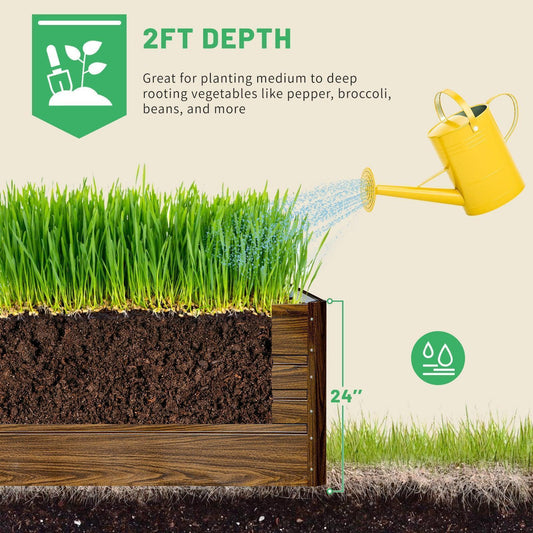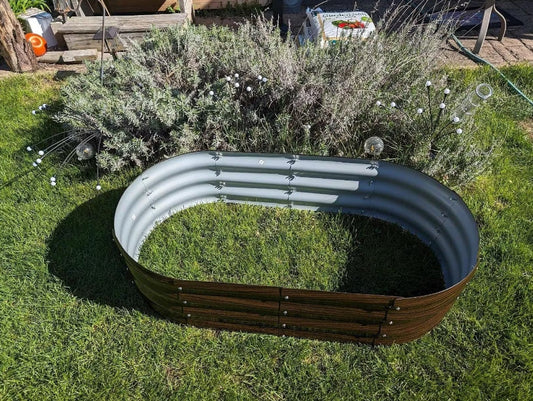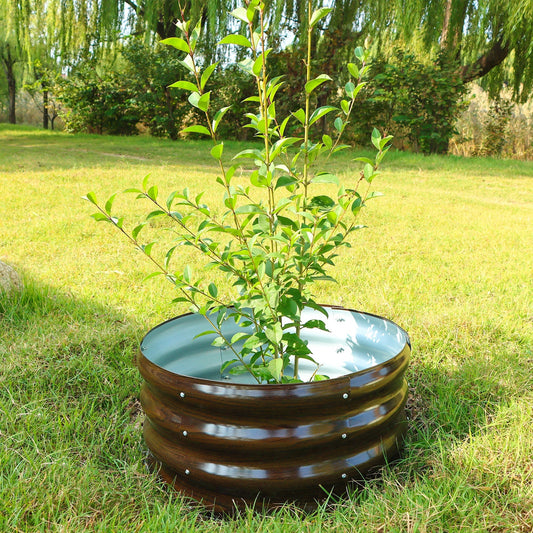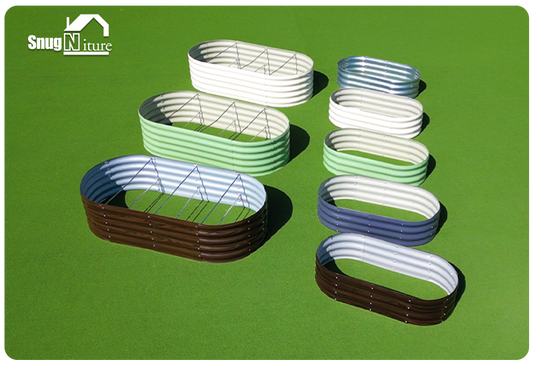Essential Guidelines for Garden Bed Configurations in 2025
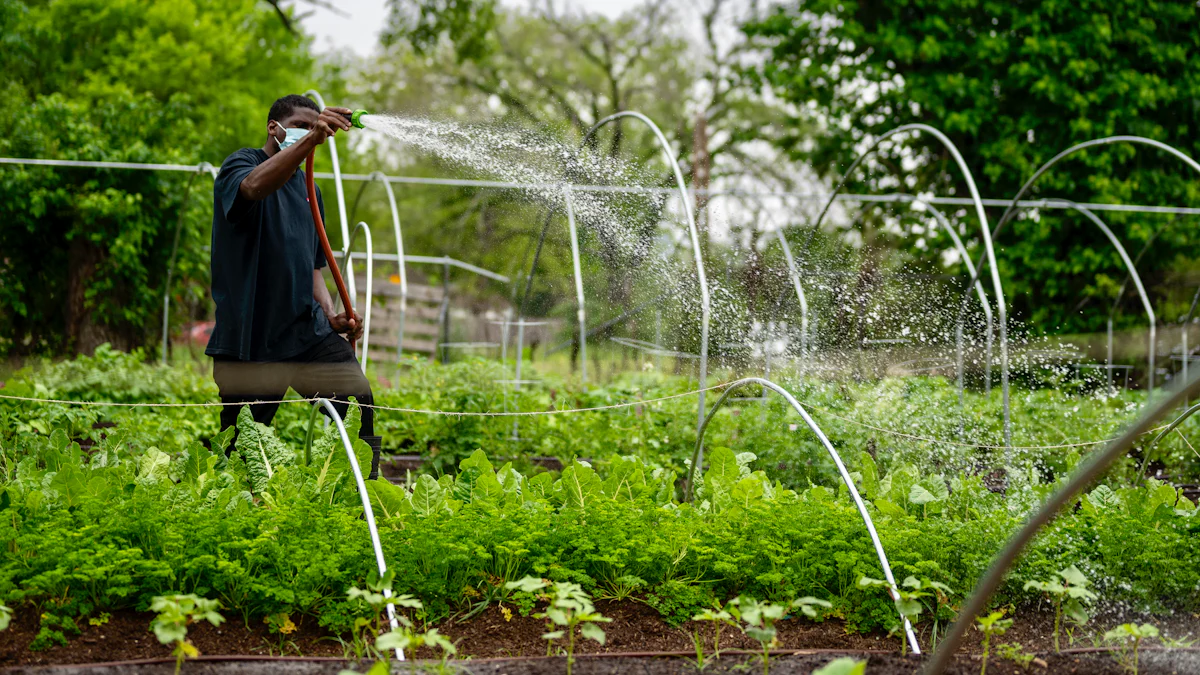
Have you noticed how gardening trends are evolving? In 2025, garden bed configurations are more important than ever. With edible landscaping and drought-tolerant plants on the rise, your garden needs a setup that’s both functional and sustainable. Urban spaces are embracing vertical gardens, while native plants are transforming outdoor areas into pollinator havens. These trends show how thoughtful designs can make your garden thrive.
SnugNiture’s Modular Metal Raised Garden Beds are leading this change. They’re durable, eco-friendly, and built to last over 20 years. Plus, their design keeps soil temperatures steady, helping your plants grow healthier and faster. Whether you’re growing veggies or flowers, these beds make gardening easier and more productive.
A well-planned garden bed doesn’t just look good—it saves time, boosts yields, and supports the environment. Ready to create your perfect garden?
Understanding Garden Bed Basics
Types of Garden Beds
When it comes to creating the perfect garden, choosing the right type of garden bed is essential. Each option offers unique benefits, so it’s all about finding what works best for you.
Raised beds: These are a favorite among gardeners, especially SnugNiture's Modular Metal Raised Garden Beds. They’re durable, eco-friendly, and designed to last. Raised beds improve drainage and keep soil warmer, which helps plants thrive.
In-ground beds: These are the most traditional option. They’re cost-effective and blend seamlessly into your yard. However, they require more effort to maintain, especially if your soil needs improvement.
Container beds: Perfect for small spaces or patios. They’re portable and versatile, making them ideal for herbs or flowers. Just make sure they have proper drainage to avoid waterlogging.
Soil Requirements
Healthy soil is the foundation of a productive garden. You can’t grow strong plants without it! Here’s what to look for:
Soil health indicators: Check for good soil color, structure, and smell. Healthy soil should crumble easily and show signs of biological activity like earthworms.
Testing and amending: Use a soil test kit to measure pH and nutrient levels. If your soil is too acidic, add lime. For alkaline soil, sulfur works wonders. Don’t forget to mix in compost or manure to boost organic matter and improve texture.
Sunlight and Watering Considerations
Your garden’s location can make or break its success. Plants need the right balance of sunlight and water to grow.
Choosing the right location: Most vegetables and flowers need full sun, which means 8-10 hours of direct sunlight daily. Partial shade works for some plants, but full shade is best for ferns or other low-light species.
Efficient watering systems: Smart irrigation systems are a game-changer. They adjust watering schedules automatically, saving water and time. Soaker hoses are another great option, delivering water directly to roots and reducing evaporation.
By understanding these basics, you’ll set your garden up for success. Whether you’re using raised beds, in-ground beds, or containers, a little planning goes a long way!
Choosing the Right Plants for Your Garden Bed
Selecting the right plants for your garden bed can feel overwhelming, but it doesn’t have to be. By considering a few key factors, you’ll create a thriving garden that matches your goals and environment.
Factors to Consider
Climate and hardiness zones
Your local climate plays a huge role in plant selection. Start by identifying your USDA growing zone. This helps you choose plants that can handle your area’s temperatures and weather extremes. Also, think about your soil type. Some plants prefer sandy soil, while others thrive in clay or loam. Adding organic matter can improve your soil and support healthier plants.
Space availability
How much room do you have? If you’re working with a small garden bed, opt for compact plants like herbs or leafy greens. Larger spaces can accommodate sprawling crops like pumpkins or tomatoes. Vertical gardening is another great option for saving space while maximizing yields.
Personal preferences and goals
What do you want from your garden? If you’re aiming for fresh produce, focus on vegetables and fruits. For a pollinator-friendly space, choose flowers like lavender or sunflowers. Your garden should reflect your tastes and priorities.
Companion Planting
Companion planting is a smart way to boost your garden’s productivity. It involves pairing plants that benefit each other.
Benefits of companion planting
Here’s how companion planting helps:
Benefit |
Description |
|---|---|
Keeps pests away using trap crops or repellent plants. |
|
Protection and Support |
Reduces weeds, prevents erosion, and retains water. |
Sharing Soil Resources |
Allows plants to share nutrients and space, improving soil health. |
Erosion and Water Retention |
Ground covers reduce erosion and improve water retention. |
Companion plants can also act as living mulch, control weeds, and increase soil organic matter.
Examples of plant pairings
Try these combinations in your garden:
Basil with tomatoes to repel thrips and attract pollinators.
Dill to attract ladybugs, which eat aphids.
Garlic near potatoes to deter insects.
Nasturtiums to lure caterpillars away from brassicas.
Seasonal Plant Selection
Cool-season crops
Cool-season crops thrive in cooler weather and can even handle frost. Plant them in early spring or fall. Examples include lettuce, kale, and broccoli. These crops grow quickly and are perfect for filling gaps in your garden.
Warm-season crops
Warm-season crops need higher temperatures and don’t tolerate frost. Plant them after the last frost date in your area. Tomatoes, peppers, and cucumbers are popular choices. They take longer to mature but reward you with bountiful harvests during summer.
By understanding your climate, using companion planting, and planning for the seasons, you’ll create a garden that’s both productive and enjoyable.
Optimizing Layout and Spacing
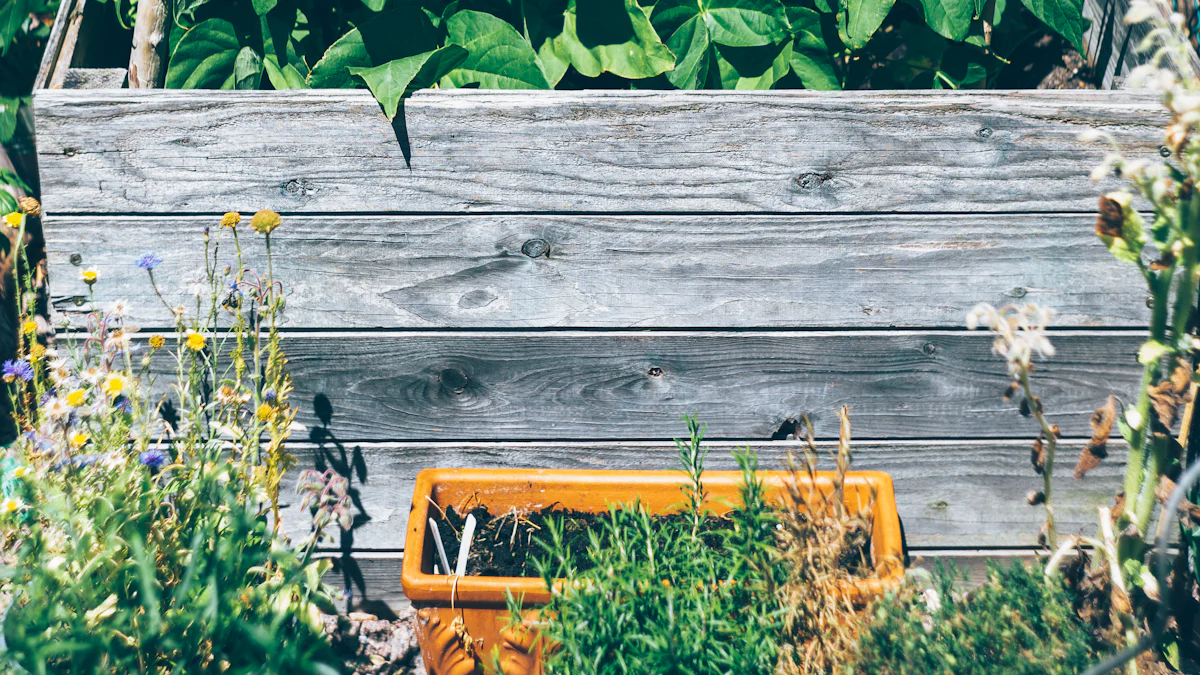
Layout Planning Techniques
Square foot gardening
Square foot gardening is a simple yet effective way to maximize your garden layout. It divides your garden bed into small, manageable squares, each dedicated to a specific plant. This method helps you organize your space efficiently and ensures every inch of your garden is productive. It’s perfect for beginners or anyone working with limited space. Plus, it makes crop rotation and succession planting a breeze.
Intensive planting methods
Intensive planting focuses on growing as much as possible in a small area. By planting crops closer together, you can maximize yields while reducing weeds. However, it’s important to follow proper spacing recommendations to avoid overcrowding. Start by assessing your space and resources, then map out your garden layout. Rotate crops each season to keep your soil healthy and experiment with different plant combinations to find what works best for you.
Spacing Guidelines
Avoiding overcrowding
Overcrowding can lead to unhealthy plants and lower yields. When plants are too close, their roots compete for nutrients and water. They also struggle to get enough sunlight, which is essential for photosynthesis. Proper spacing ensures each plant has room to grow, leading to healthier, more robust crops. It also improves air circulation, reducing the risk of fungal diseases and pests.
Maximizing airflow and sunlight
Good spacing isn’t just about avoiding overcrowding. It’s also about creating an environment where plants can thrive. Adequate spacing allows sunlight to reach every leaf and promotes airflow, which keeps plants dry and disease-free. This simple step can make a big difference in your garden’s overall health and productivity.
Pathways and Accessibility
Designing for easy maintenance
A well-planned garden layout includes pathways that make maintenance easier. Wide paths let you move freely without stepping on your plants or compacting the soil. Use materials like gravel or mulch to create durable, low-maintenance paths that blend seamlessly with your garden.
Ensuring proper drainage
Pathways also play a role in drainage. Slightly sloping paths can direct excess water away from your garden beds, preventing waterlogging. This keeps your plants happy and your garden looking its best. With thoughtful planning, you can create a garden layout that’s both functional and beautiful.
Incorporating Modern Trends in 2025
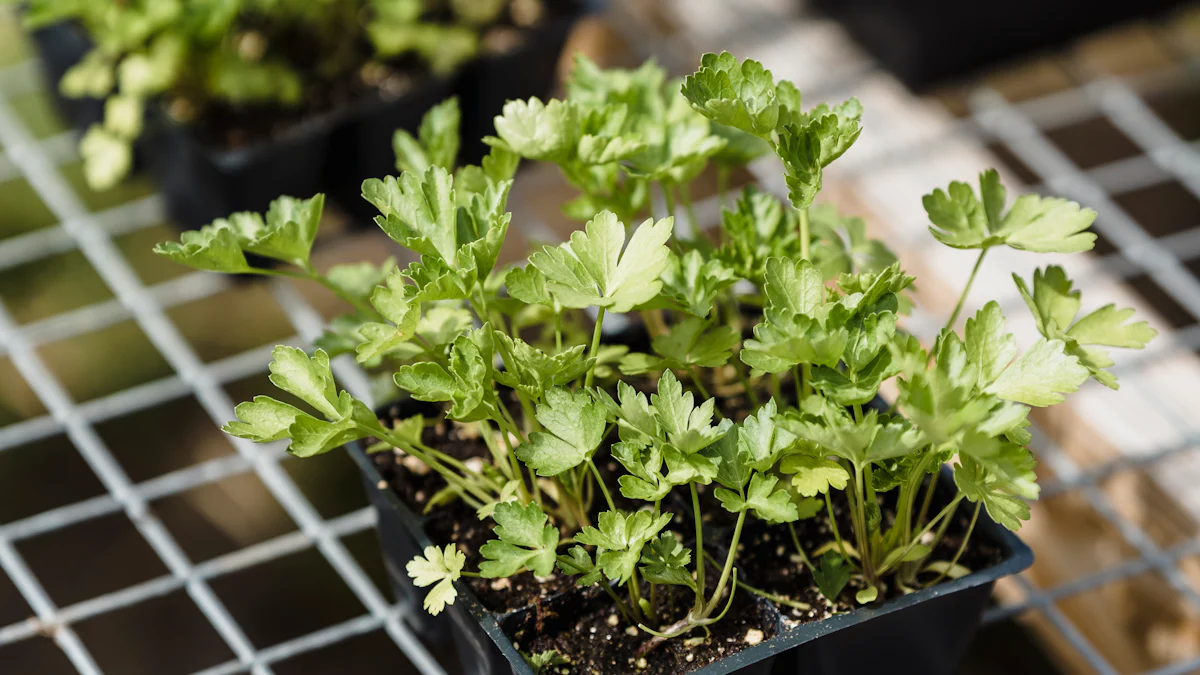
Vertical Gardening
Benefits of vertical gardening
Vertical gardening is a game-changer, especially if you’re working with limited space. It’s perfect for urban areas where traditional gardening isn’t always possible. Here’s why you should consider it:
It maximizes small spaces by growing plants upward on walls, trellises, or other structures.
It improves air quality and reduces urban heat, making your environment healthier.
It’s a stress-reliever. Tending to a vertical garden promotes physical activity and boosts your mood.
It encourages healthier eating habits by giving you access to fresh, edible plants.
Vertical gardening isn’t just practical—it’s also beautiful. You can create a lush, green oasis even in the smallest spaces.
Best plants for vertical setups
Not all plants are suited for vertical gardening, but many thrive in these setups. Climbing vines like morning glories and vegetables like tomatoes are excellent choices. For indoor or patio spaces, pothos and philodendrons are great options. If you’re looking for something decorative, orchids and bromeliads add a touch of elegance. With the right plants, your vertical garden can be both functional and stunning.
Eco-Friendly Practices
Using organic materials
Sustainability starts with your garden. Organic materials like compost and mulch improve soil health and reduce the need for synthetic fertilizers. Raised garden beds, like SnugNiture’s Modular Metal Raised Garden Beds, conserve water and enhance soil fertility. By going organic, you’re creating a healthier environment for your plants and the planet.
Reducing waste with composting
Composting is one of the easiest ways to recycle kitchen and garden waste. It enriches your soil while cutting down on landfill contributions. Pair this with rainwater harvesting to conserve water, and you’ll have a truly eco-friendly garden. Planting native species and using organic pest management further supports local ecosystems and reduces your environmental impact.
Smart Gardening Tools
Automated irrigation systems
Watering your garden has never been easier. Automated irrigation systems use real-time data from weather forecasts and soil moisture sensors to adjust watering schedules. This ensures your plants get the right amount of water at the right time. You can even control these systems remotely, so your garden stays healthy no matter where you are.
Apps and sensors for monitoring plant health
Smart gardening tools go beyond watering. Apps and sensors monitor soil conditions, light levels, and plant health. They send real-time notifications, helping you make quick adjustments. These tools take the guesswork out of gardening, making it easier for you to grow a thriving garden.
Modular Raised Garden Beds
Benefits of modular designs (e.g., SnugNiture's customizable options)
Modular raised garden beds are a game-changer for gardeners like you. They offer flexibility, durability, and ease of use, making them perfect for any gardening project. With SnugNiture's modular designs, you can customize your raised bed to fit your space and needs. Whether you’re working with a small patio or a sprawling backyard, these beds adapt to your vision.
One of the biggest perks is how easy they are to assemble. You don’t need special tools or skills to set them up. The modular design lets you expand or rearrange your garden layout whenever you want. This means you can start small and grow your garden over time.
These raised beds also promote healthier plants. Their sturdy construction improves drainage and prevents soil compaction, giving roots the room they need to thrive. Plus, the eco-friendly materials ensure a safe environment for your vegetables, herbs, or flowers. With heights ranging from 12 to 24 inches, they’re great for reducing back strain during planting and maintenance.
Popular configurations for vegetable gardens
Choosing the right configuration for your modular raised garden beds can make a big difference in how your garden looks and functions. Here are some popular setups to consider:
Configuration Type |
Description |
|---|---|
Tiered terraces |
Stacked levels for maximizing space and visual appeal, suitable for various plant types. |
Keyhole design |
Circular shape with central access for easy maintenance, ideal for herbs and smaller vegetables. |
L-shaped configurations |
Utilizes corners effectively, maximizing space while allowing for pathways. |
Hexagonal beds |
Unique six-sided shape that creates visual interest and allows for intensive planting. |
Nested beds |
Smaller beds within larger ones to maximize growing area, integrating various plants. |
Curved beds |
Soft shapes that blend into the landscape, adding visual movement. |
Elevated boxes |
Raised beds on platforms for easier access, especially beneficial for those with mobility issues. |
Vertical towers |
Stacked beds to save space while providing ample room for plant roots. |
Integrated irrigation |
Automated systems for consistent watering, enhancing plant care efficiency. |
Each configuration has its own charm and purpose. For example, tiered terraces are perfect for creating a visually stunning garden, while keyhole designs make maintenance a breeze. If you’re short on space, vertical towers or elevated boxes are excellent options. These setups not only save space but also make gardening more accessible.
With modular raised garden beds, you can mix and match configurations to create your dream garden. Whether you prefer island beds with curved edges or hexagonal shapes for intensive planting, the possibilities are endless.
Maintenance and Succession Planting
Keeping your vegetable garden thriving requires regular care and smart planning. With a few simple tips, you can maintain healthy garden beds and enjoy a productive harvest all year long.
Regular Maintenance Tips
Weeding and mulching
Weeds are your garden’s biggest competitors. They steal nutrients, water, and sunlight from your vegetables. Pull weeds regularly to keep them under control. Adding mulch is another great way to suppress weeds. Organic mulch, like straw or shredded leaves, also helps retain soil moisture and regulate temperature. Plus, it breaks down over time, enriching your soil.
Monitoring for pests and diseases
Pests and diseases can wreak havoc on your vegetable garden. Inspect your plants often for signs of trouble, like curled leaves, slime trails, or fungi. Check the undersides of leaves for hidden pests. Use row covers or netting to protect your crops, and encourage natural predators like ladybugs to keep pests in check. If you spot damaged plants, remove them quickly to prevent the spread of disease.
Tip: Composting damaged plants is a no-go. Dispose of them properly to avoid contaminating your compost pile.
Succession Planting
Benefits of succession planting
Succession planting is a game-changer for maximizing your vegetable garden’s productivity. It lets you grow multiple crops in the same space throughout the year. For example, you can plant quick-growing radishes between slower crops like cabbage. After harvesting peas, follow up with sweet corn. This method keeps your garden beds full and productive.
Filling gaps after harvest
Empty spaces in your garden bed are missed opportunities. Fill those gaps with organic materials like straw or shredded leaves to save on soil costs. Water between layers to settle the materials before adding topsoil. After each planting, top off the bed with compost to maintain soil quality. This keeps your vegetable garden plan running smoothly.
Crop Rotation
Preventing soil depletion
Growing the same crops in the same spot every year depletes the soil. Crop rotation solves this problem by alternating plant families. For example, follow nitrogen-hungry vegetables like tomatoes with nitrogen-fixing plants like beans. This keeps your soil balanced and fertile.
Rotating crops for pest control
Crop rotation also disrupts pest life cycles. Moving plants to different spots confuses pests and reduces the spread of diseases. Incorporating cover crops, like clover, boosts soil fertility and improves overall health. Here’s a quick guide to crop rotation best practices:
Best Practice |
Description |
|---|---|
Rotate crops on a multi-year cycle |
Prevents nutrient depletion and reduces pest buildup. |
Utilize different plant families |
Confuses pests and limits disease spread. |
Alternate heavy feeders with light feeders |
Balances nutrient usage in the soil. |
Grow nitrogen-fixing plants |
Adds nutrients back into the soil, improving fertility over time. |
By following these strategies, you’ll create a sustainable vegetable garden that stays productive year after year.
Thoughtful garden bed configurations are the key to a thriving garden in 2025. By planning your layout carefully, you’ll save time, grow healthier plants, and enjoy bigger harvests. Modern trends like modular raised beds and smart tools make gardening easier and more rewarding.
SnugNiture’s Modular Metal Raised Garden Beds are a perfect example of how innovation can transform your gardening experience. They’re durable, eco-friendly, and customizable to fit any space. Whether you’re a beginner or an expert, these beds help you create a garden that’s productive and sustainable.
Why wait? Start planning your garden today and turn your outdoor space into a green paradise!



